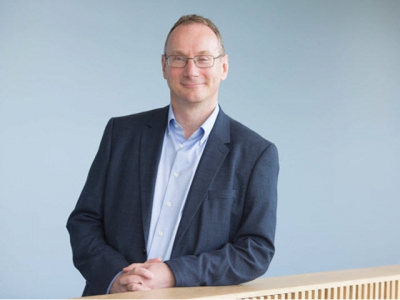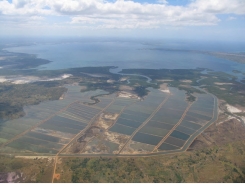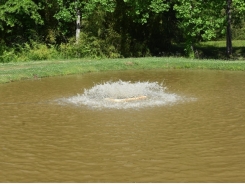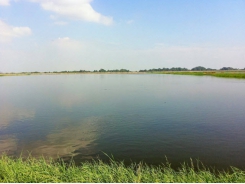New tech trialled for water quality monitoring

A project to test cutting-edge techniques that could help to protect the aquaculture industry from the impact of harmful algal blooms (HABs) and other water quality issues has kicked off in Scotland today.
Professor Andrew Tyler of Stirling University is leading the £2.9m GloboLakes project
Around 20 scientists from the University of Stirling, the Plymouth Marine Laboratory and colleagues from across Europe are today gathering at Loch Leven, Kinross-shire, where they will study the feasibility of using drone and other in situ technology to monitor the quality of water as part of the €5 million MONOCLE project, funded by the EU’s Horizon 2020 programme.
The work, which takes place over the next three days, will dovetail with a Stirling-led project that is using satellites to monitor water quality from space. Scientists hope that information gathered from drones or loch-side devices will help address gaps in conventional monitoring and support data collected with satellites.
Stirling’s Professor Andrew Tyler leads the £2.9m GloboLakes project, which uses satellites of the European Space Agency to monitor water quality, including the detection of algal concentrations, harmful algal blooms, and mineral and organic matter.
While the project team believe the technology has the ability to help monitor the millions of lakes across the world, the latest study, MONOCLE, addresses specific gaps in data.
Professor Tyler said: “Only a small fraction of the world’s 100 million lakes are routinely monitored – largely due to their geographical spread and the logistical and political difficulties of monitoring water.
“The GloboLakes project has shown that, by using satellites, we can measure the constituents that contribute to water quality by their absorption and scattering of characteristics within the water column associated with lakes, reservoirs, rivers and estuaries.”
“However, there are often gaps in this data – perhaps due to cloud cover, or because the bodies of water are too small to be monitored by the satellites. Therefore, the MONOCLE project now tries to fill the gaps in the data by using in situ and drone-based technologies.”
MONOCLE involves 12 partners and is led by Stefan Simis, earth observation scientist at Plymouth Marine Laboratory. He said: “It is essential to obtain regular and widespread measurements of water quality in lakes, estuaries and coastal waters, both to support satellite observations and in their own right – we use satellites to relate water colour to water quality, while measurements in the field are essential to monitor further chemical and biological properties.”
“Deploying sensors is unfortunately still a costly effort and one of the aims of MONOCLE is to bring down this cost. Our international colleagues visiting lochs in Scotland this week are developing methods to use consumer drones and sensors which you can build yourself, alongside highly accurate measurement instruments. “
After trialling the technology at Loch Leven, further tests will take place in Sweden, Hungary, Romania and Tanzania – assessing and comparing both low to high cost solutions and promoting the engagement of citizens in the monitoring of water.
Prof Tyler added: “This project at Loch Leven is the first in a series, in which we will look at how different instruments work, how they compare and what factors influence that comparison.
“We hope that, by the end of this project, both low and high-tech solutions will be available to provide information that validates existing satellite technologies and provide solutions to the gaps in space and time from satellite data covering these dynamic yet vulnerable environments.”
Related news
Tools

Phối trộn thức ăn chăn nuôi

Pha dung dịch thủy canh

Định mức cho tôm ăn

Phối trộn phân bón NPK

Xác định tỷ lệ tôm sống

Chuyển đổi đơn vị phân bón

Xác định công suất sục khí

Chuyển đổi đơn vị tôm

Tính diện tích nhà kính

Tính thể tích ao




 Treatment of shrimp hatchery effluents
Treatment of shrimp hatchery effluents  Constantly changing pH unavoidable, completely normal
Constantly changing pH unavoidable, completely normal